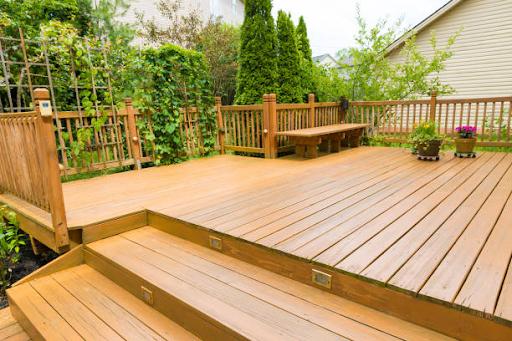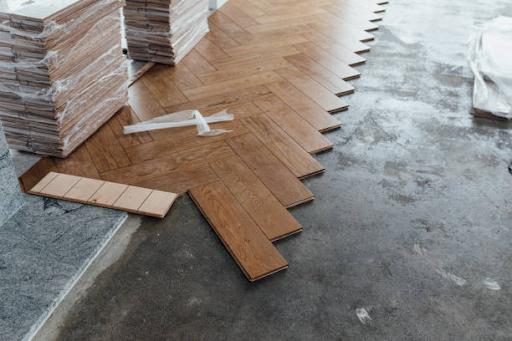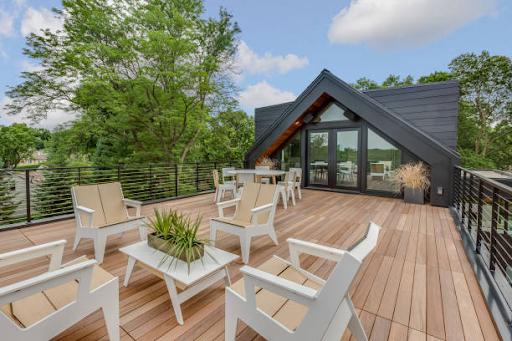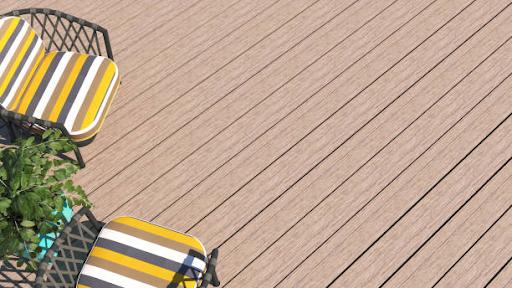How to install deck tiles on uneven surfaces
Decks can be built on uneven or rocky ground. Depending on what you mean by “uneven,” there are different ways to fix it.
Advantages of installing deck
|
Ideal for socializing. |
Decks are great for hosting friends and family. Decks are wonderful for summer cookouts and afternoon lunches. |
|---|---|
|
Decks increase home value. |
A deck may increase your home’s value. A deck improves your listing’s attractiveness. |
|
Suitable outdoor decor |
The decks look wonderful with potted plants and garden statues. This flat surface lets you design your fantasy backyard. Build a deck with a built-in planter for flowers or foliage. Use the deck to display garden chairs and other outdoor furnishings. (Ultra-Decking 2021) |
|
Customizable |
Decks aren’t flat areas with stairs. Consider adding some personalization choices. |
|
Decks Offer a Relaxing Place to Unwind. |
We’ve all had those times when you wish you could go away, even if only for a little while. A deck enables you to retreat, unwind, and then face your worries. |
|
Low-maintenance |
Your deck should be low-maintenance compared to other areas of your home. Expanding your kitchen may increase cleaning time, but you won’t sweep or wash the deck. They’re low-maintenance. The weatherproofing stain should last for years. |
Decks come in two different kinds.
Deck on a Hill
In some neighborhoods, the living and dining rooms on the main floor have raised decks. Because they are raised, they work well on sloped lots and other uneven ground. This makes them good for places with hills or raised homes.
A ground-level deck
Even though it’s called a “level” deck, this one is not completely on the ground. Even though these decks are low to the ground, they need a foundation that is a little higher. Most ground-level decks have a few steps that make it easy for guests to get to the deck. A ground-level deck is also easier to keep clean and doesn’t need to be attached to the house to be stable.
Depending on your surface, there are many options for putting a deck on an uneven surface. We explain each method in more depth below.
|
Cemented support posts |
Concrete Slabs |
|---|---|
|
Support beams. |
|
Decking base with cemented support posts
Decking on slopes or decks that need to be higher than 15cm
Downsides: it can be hard to do if you’ve never put decking on uneven ground before.
Support posts are great for all kinds of decks, but they work best for decks that are attached to homes. It works best in places where the slope points away from the building. Here are the steps for putting it together.
Step 1: First, you’ll need to clean up the area where you’ll be putting it. Clear the ground of any weeds, grass, or other plants. You’ll also need a tamper to pack down and level the area where you’re installing.
Step 2: Next, begin digging the post holes. At least one foot of solid ground should be below the hole. But for raised decks on steeper slopes, you may need to look at other building codes to figure out what to do.
Step 3: For the next step, you can do a few different things. There are different ways to set up support posts. One choice is to pour concrete right into the hole and let it set up as directed. Use a concrete drill to put concrete fasteners into the concrete after it has dried. Last, put the wooden posts into the fasteners made of concrete. This is the best way to do it, especially for slopes that are steeper.
You could also put the post inside the hole. To do this, you will need to put gravel at the bottom of the hole. Then, put the 6×6 or 2×6 wood post in the hole and make sure it is level. Last, pour the concrete mix to hold the wood post in place.
Pro Tip Takeaway: You will also need to arrange short-term support for the posts. This choice works best on slopes that aren’t too steep.
Step 4: Run and level a string line across the wood posts to determine where to join the subframe pieces. Once the lines are drawn, you can start putting up the beams and joists. Check the building codes in your area to find out what size screws and wood thicknesses you should use.
Step 5: Lay the decking boards once you’re done setting up the subframe. You might also need to put up railings for safety reasons and to meet building codes in your area.
Decking base with Concrete Slabs
Using concrete slabs is another way to lay decking on uneven ground. This solution only works on land that is flat but has a slight slope. It’s also best for floating decks with low levels. Here are some steps to take.
Step 1: Mark the location for installation and dig down at least 20 cm, removing any grass or weeds as you go. Then, pack and tamp down the whole area where you dug.
Step 2: Lay landscaping fabric over the area where you dug. This helps stop weeds from growing in the wrong places. It also lets water flow away. Then, use the MOT Type 1 sub-base to cover the area. You could also use a mix of small and large gravel, which is often easier to find. Fill the area to a depth of at least 50 cm.
Step 3: Put the concrete slabs in the area where the installation will happen. Then, put pieces of wood on top of the slabs to make sure they are all the same height. If that doesn’t work, you can add more gravel or base and move the concrete slabs.
Step 4: Begin building the deck’s subframe with beams and joists. Then, they put the frame on top of the slabs of concrete. Again, make sure that the subframe is level. If you need to, make changes.
Step 5: After setting up the frame, you can now put down the decking boards.
Since the decking boards are close to the ground, you might want to use materials that are strong. Cedar and redwood are good choices for softwoods. You can also use materials like composite decking that are not made of wood.
Pro Tip Takeaway: Most hardwoods are great for decks on the ground level. Pine is cheaper, workable, and dependable despite being less durable. Softwoods are weaker, less durable, and less long-lasting than hardwoods.
Deck base with Support beams
Concrete is a solid basis for garden decking, but it can’t be leveled like dirt. The best way to lay garden decking on uneven concrete is to build the deck’s frame first and then use it as a guide.
A frame measures the height of the garden deck support beams.
Step 1
Measure and build the frame for the garden deck. Collect bricks and temporary support beams that are different lengths.
Step 2: Place the frame of the deck on top of the uneven concrete surface. If you’re placing the deck on concrete, use bricks and temporary support beams. This will help lift drooping frame components. Use temporary support beams to adjust a raised deck’s height and evenness. For both types of decks, keep adjusting the supports until the surface of the deck frame is level.
Step 3: After the deck frame has been leveled, measure the height of each temporary support structure. With a saw, you can cut the support posts to the same length as the temporary supports. Nail these supports to the concrete using rust-proof nails and a power hammer.
Step 4: Attach the frame of the deck to the beams. Use the power hammer and concrete nails to attach the deck frame to the concrete where it rests on it.
Step 5: Deck the leveled deck by adding stringers to the frame. Use the level on the finished surface to make sure that your supporters are doing their job. When building the frame for your deck, you should leave 400mm between the wood joists. (Acorn Landscape Gardening 2020)
Are You Ready To build your Deck?
Adding a deck will give you a good return on your money. It gives you a lot of options for hosting gatherings and relaxing outside in the fresh air.
Contact Smart Remodeling LLC right away in Houston to have the best decks installed. Let us visit your home to see how to install a deck on your uneven area.
Are you all set to get going? Set up an appointment with one of our deck-building experts right now to get a free design consultation. You can reach us by calling 832-808-8889 or sending an email to sales@smartremodelingllc.com









